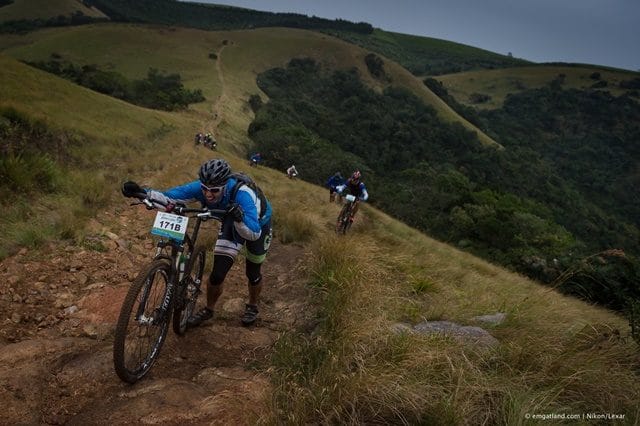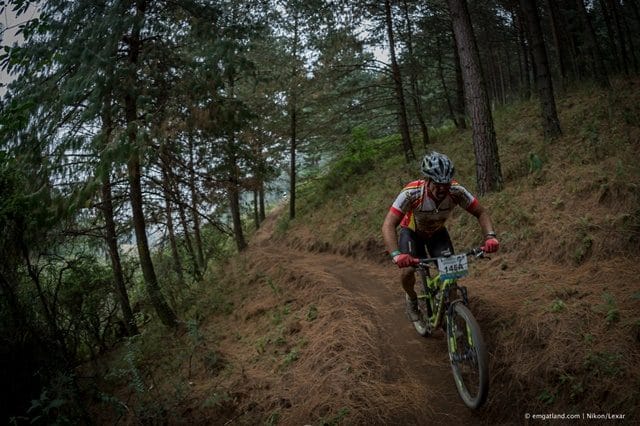How To Start Mountain Biking
SPONSORED

From a distance, the world of mountain biking can seem daunting and confusing to enter, but with a few basics you’ll be up and riding in no time.
With wildly popular events like the Old Mutual joBerg2c, the Cape Pioneer Trek and the Absa Cape Epic (plus too many three-day stage races to mention) filling the MTB calendar, many newbie mountain bikers can be forgiven for thinking that the sport is all about the long, hard slog.
But that’s not actually the case… even eventual joBerg2c finishers need to start somewhere. Don’t be put off by the mind-boggling distances that South Africans like to ride, or from the glitzy products in your local bike store. Just get in the saddle and ride.
In The Beginning
One of the joys of mountain biking is the sheer number of gadgets and gizmos you can add to your collection as you go. To start with, though, there are a few basics:
Bike
Well, obviously. You don’t need to race out the blocks on the most expensive marathon bike on the market. Most casual riders would do well to invest in a less “racey” bike, for example a Specialized Camber would suit a beginner better than a Specialized Epic. Marathon bikes generally have less travel in their shocks, while the bike set-up is more aggressive – this isn’t really an issue, but it can mean that the bike might be tricky to handle. There are bikes for every off-road situation, so it’s best to figure out what kind of riding you like to do before blowing your retirement annuity on the bike that claimed the last world champs. Most bike stores will let you test ride a bike before you buy. Don’t be afraid to ask.
Hard vs Soft
This comes down to budget or personal preference if budget is not an issue. Good hard tail bikes are lighter and climb well, while soft tail (or dual suspension) bikes let you bounce and bomb your way down technical trails. Again, ride before you buy.
Helmet
This is a, pardon the pun, no-brainer. Invest in a good helmet – which all reputable brands will sell you – before hitting the trail.
Shoes
Go for cycling shoes and cleats straight away – forget about learning to ride in takkies. You’ll endure a few bumps and bruises in the beginning, but the positives – pedalling efficiency, greater control – outweigh the negatives.
Baggies or Lycra, cycling shirt
You’ll need padded shorts. Bib shorts are best because they don’t slide down and are extremely comfortable. If you don’t fancy going “full Lycra” you can always cover up with MTB baggies – just remember to “pad” up first; either wear the baggies over your bib shorts or buy baggies that have a padded chamois. A good-quality cycling shirt is also better than a flapping t-shirt. They are snug, so you won’t chafe, and they come with pockets in the back so you can store your spares and snacks.
Gloves
When you sweat, your hands will get sweaty. Gloves will ensure you don’t slip. More importantly, when you crash, and you will, the gloves will protect your hands from nasty scrapes. For mountain biking in particular full-finger gloves are a good fit for when you need to replace, patch or repair a tyre.
ID
Always ride with some form of identification, and always try to ride with someone. It’s also advisable to let your family know when and where you’ll be riding – just in case.
Essential tools
A multi-tool, small pump and CO2 “bomb” will see you through most rides.

The Fundamentals
Remember these MTB basics when you get on the bike for the first time.
Keep moving
Tip: What makes most riders falter? It’s not lack of ability – it’s lack of commitment. The biggest mistake is to bail out and unclip at the first sign of momentum loss. Stay the course – lean in and keep pedalling while striving to maintain balance, and you’ll make it through the rocks, mud or sand.
Mount and dismount
Tip: If you have to dismount on a downhill switchback or a steep section, lean back and dismount behind your saddle.
Balance practice
Tip: Design a course at home with cones and ride as slow as possible around them.
Shifting
Tip: Before you push the shifter (the lever that changes your gears) take the force off the pedals, keep pedalling without putting pressure on your pedals, shift and increase speed moderately. Make sure the gear is settled before you go full gas!
Braking
Tip: Make sure you know what lever is for your rear and front brake! Learn to control your front brake in corners. In mountain biking one or two fingers is all you need on the brakes. This is because you still need to hold the handle bar and to shift. Try and ride with one finger on the brakes and you’ll soon see there’s no need for a death grip.
Cornering
Tip: Left corner, left pedal up; right corner right pedal up. Put all your weight on the outside pedal. This is the basic rule.
Ready to take up MTB? Ride for More Than Yourself! and make a difference to a cause close to your heart.


